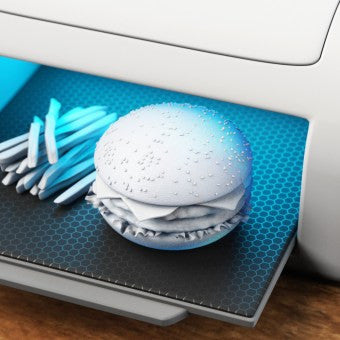Source: Four Ways 3D Printing May Render Traditional Manufacturing Obsolete | HuffPost UK (MACIEJ FROLOW VIA GETTY IMAGES)
Additive Manufacturing is yet another way to move faster towards the end result of creating a product. The source link is stating that 3D Printing could render traditional manufacturing obsolete. 3DShoes.com really likes this idea as we have aggregated most of the 3D printing facilities under this umbrella and this access is priceless, but the reality is traditional manufacturing is not in jeopardy because there are certain components associated with footwear that can’t be reproduced via additive manufacturing. The parts that can’t be reproduced are falling in number though.
The cost associated with making a shoe is about 1,000 to 2,000 dollars for a traditional sample. If a person has access to a 3D printer it would take about 10-20 samples to equate to the price of the printer. Once that price is accounted for the shoes only require the cost of filament. Which is an obvious reason for how traditional manufacturing can be made obsolete.
The four ways that are presented as the reason for disruption are as follow:
Waste Prevention
The perception that there is very little waste in 3D printing is true. Even with the creation of a 3D printed item there is still a cleaning and excess of materials prior to an item gaining its final shape. When you consider the production of a shoe has multiple components, there is a reduction of waste, but the end product still requires the attachment of parts. However, waste prevention is one of the qualities that contribute to the importance of 3D Printing.
Easy Prototype Production
Nike actually photo printed an athlete’s head in order to create performance headwear for an Olympian. Creating a sample in footwear can now be reduced in time from months to days to hours. In footwear when an artist creates a rendering, they can actually input the design into software and produce a working copy that can be painted and customized. Removing the need for the pouring of a mold for an outsole and the use of glue for attaching and creating the shoe in a manufacturing plant.
Seamless Production
These are the steps involved in traditional shoe cobbling: design, submit, cut, shape on the last, attach the outsole. In the production of a 3D shoe the design can be generated on the computer, then printed. The only thing a human will have to do is insert laces. Nike has launched a division named Express Lane. Their goal is to move from concept to product in weeks. In traditional manufacturing that time would include a trip across the ocean which could lead to a 3-6 month wait for a product.
Mass Customization
The Source link delivers information about the process of 3D Printing which explains in detail how customization will be shaped.
Overall, the way manufacturing has worked in the past is definitely being disrupted. The question is will the employment of individuals adjust fast enough to support the shift? The question shouldn’t be how will 3D disrupt, but will it be able to disrupt without people trained to work in the industry?
#3DShoes #3DPrintedShoes #3DPrinted




